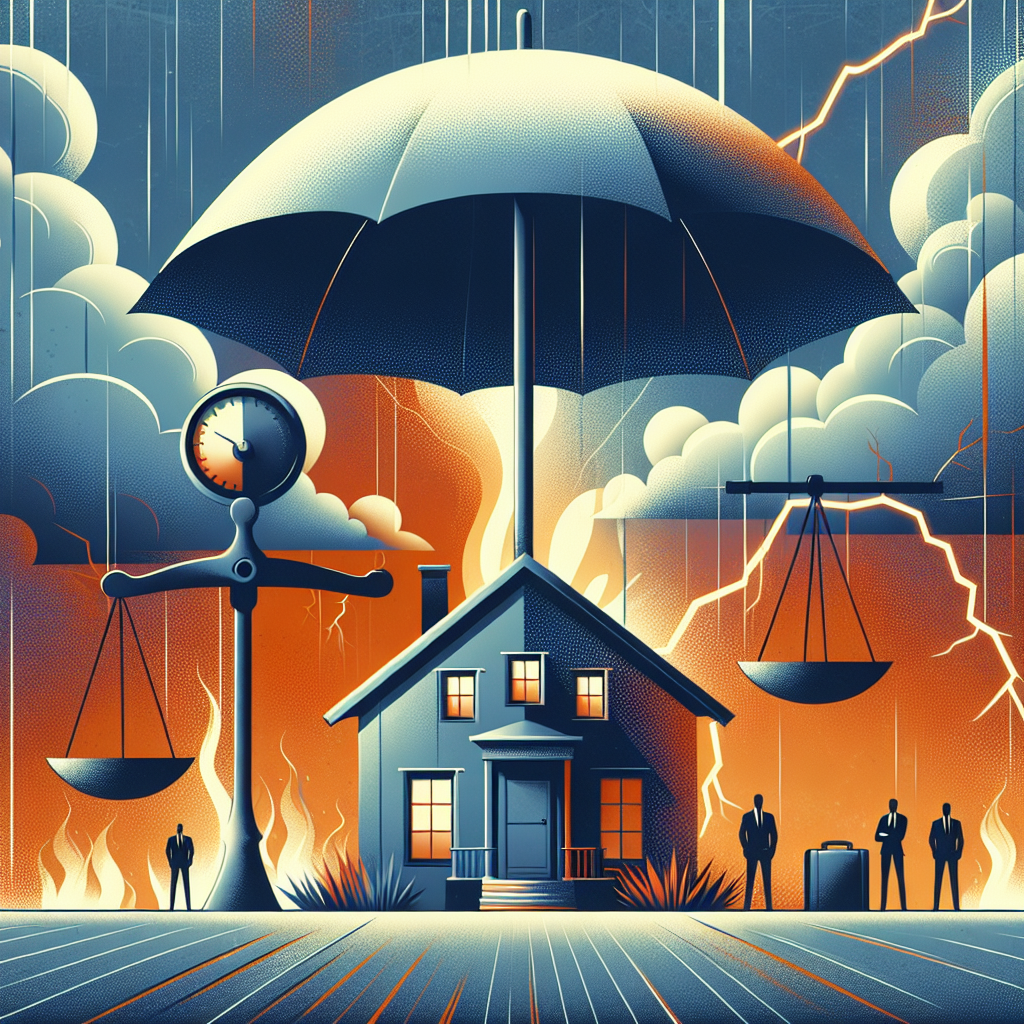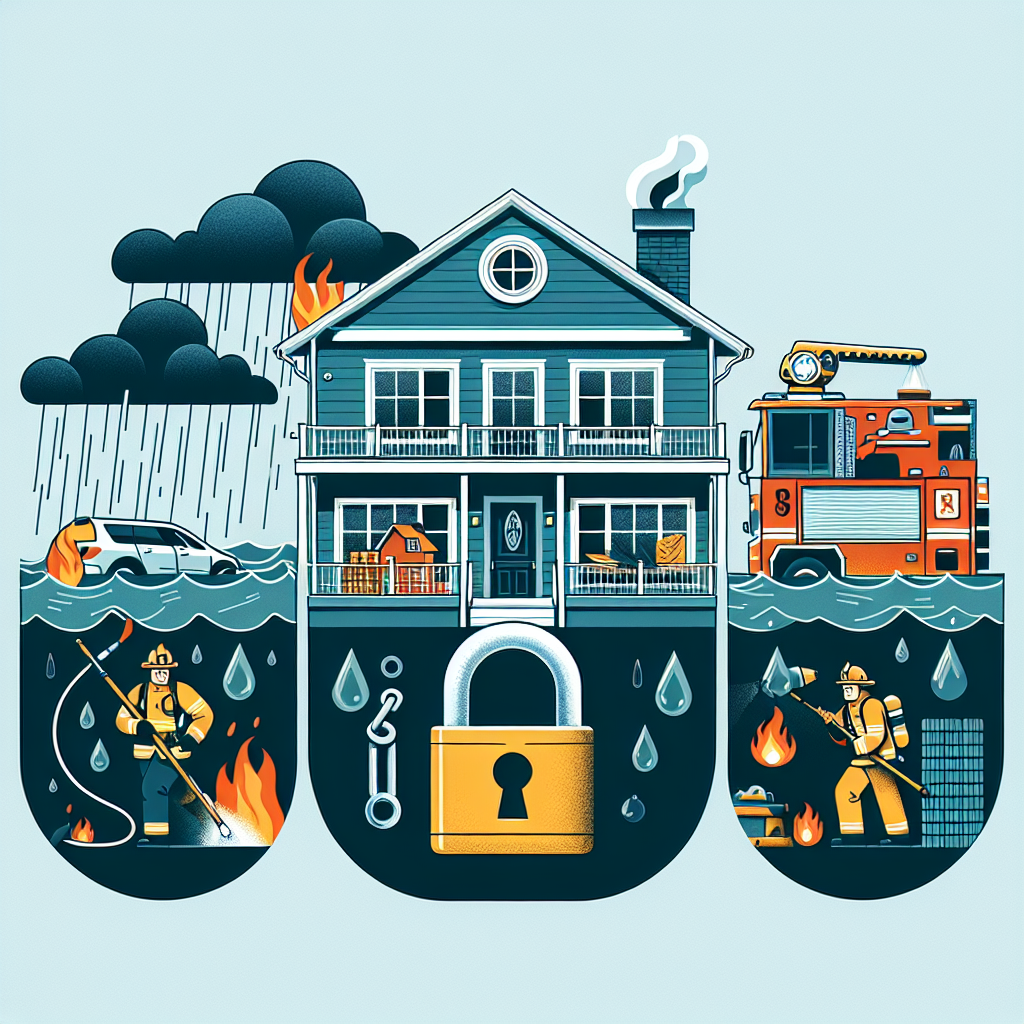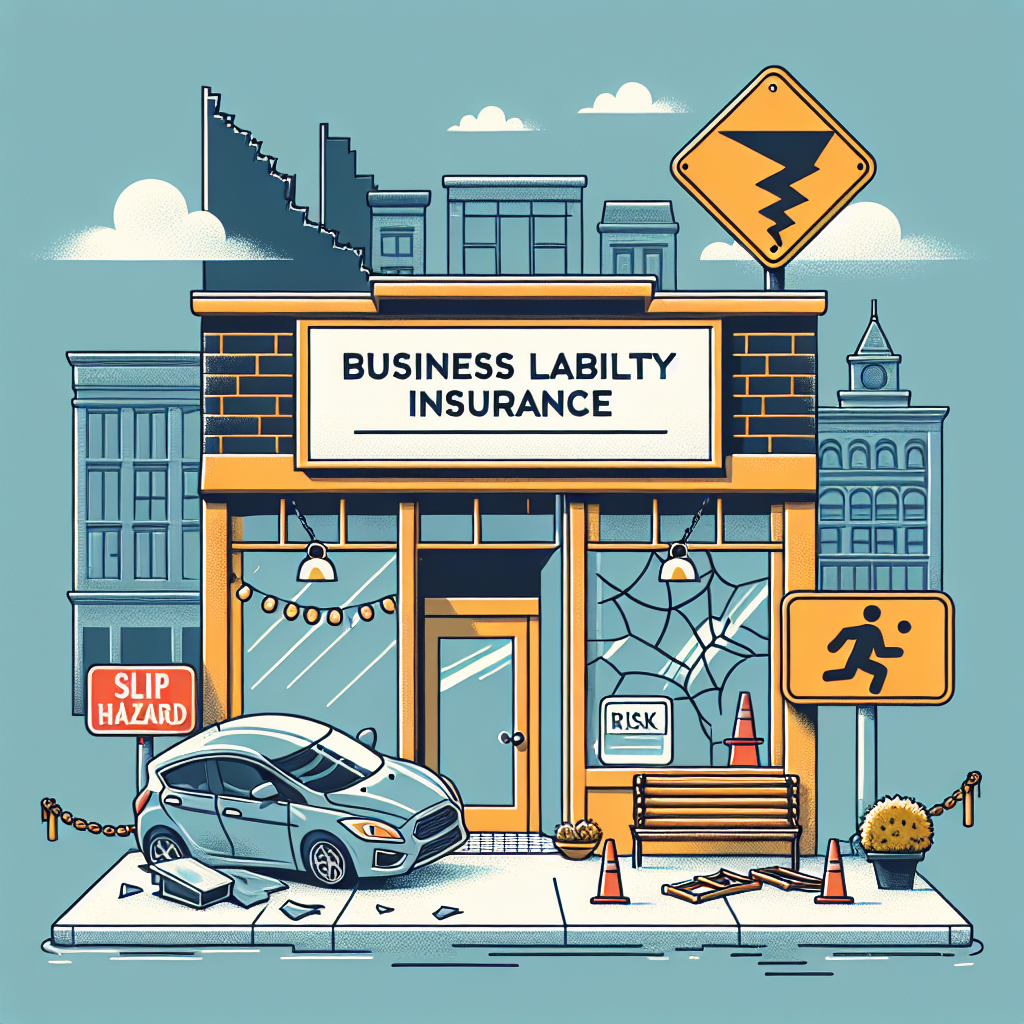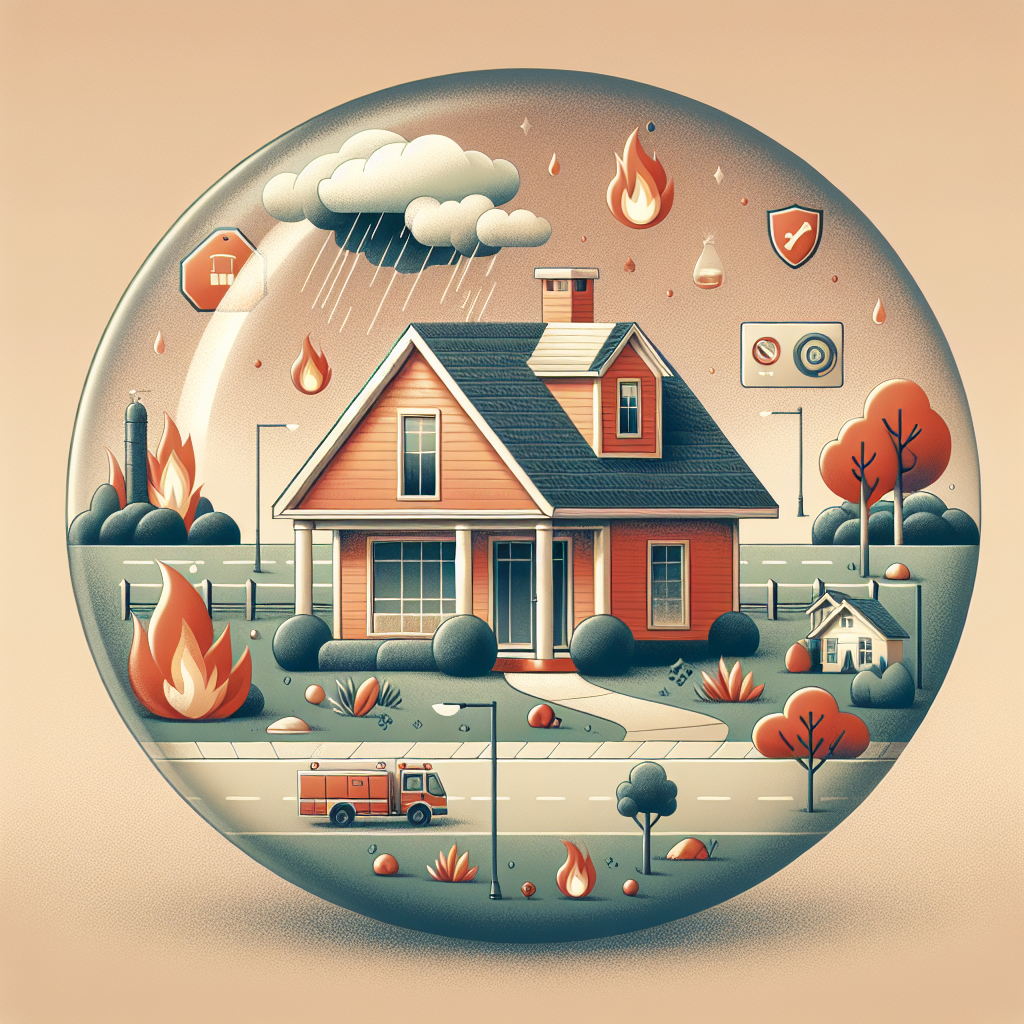Filed under Home Insurance on
How Much Liability Coverage for Home Insurance You Need

You buy homeowners insurance to protect your biggest investment, but the part that can truly guard your financial future is liability coverage. It pays when you are legally responsible for injuries or property damage to others, and it can also fund your legal defense. Yet many homeowners carry the default limit without a second thought. This guide explains how to choose the right amount, what drives the decision, and how to keep costs manageable—so you can feel confident your policy is sized to real-world risks.
What Liability Coverage Does—and Does Not—Cover
Liability coverage on a homeowners policy typically pays for bodily injury and property damage you or your household members cause to others, on or off your property. It can apply if a guest slips on your stairs, your child’s errant ball breaks a neighbor’s window, or your dog injures someone. Just as important, the insurer generally provides and pays for your legal defense if you are sued, even if the claim is groundless, up to the policy’s terms.
Most policies include medical payments to others, a separate coverage that pays small medical bills for guests hurt on your premises, regardless of fault. This is not a substitute for liability insurance; it’s designed to resolve minor incidents quickly and compassionately and typically carries a modest limit.
Common exclusions include business-related incidents, motor vehicle accidents (which belong under auto policies), intentional acts, and claims arising from certain high-risk activities without proper endorsements. Personal injury claims such as libel, slander, or invasion of privacy may require a policy endorsement. Always check your specific policy wording, as definitions and supplemental payments vary by insurer and state.
How Much Liability Coverage for Home Insurance You Need: The Short Answer
If you want a quick take: many homeowners start at $300,000 to $500,000 in personal liability coverage, and those with above-average assets or risk exposure often add a $1 million umbrella policy. That range aligns with common industry recommendations from consumer advocates and insurance associations that monitor claim costs and verdict trends.
Why this ballpark? Medical inflation, higher legal costs, and larger jury awards have pushed claim severity higher over the last decade. Even a single serious injury can easily surpass $100,000 in damages, and complex cases can climb dramatically. Setting a higher base limit makes it less likely you’ll need to tap personal savings, investments, or future wages to settle a claim.
A quick rule of thumb for How Much Liability Coverage for Home Insurance You Need
- Carry at least enough to cover your net worth, including home equity and non-retirement investments.
- If your assets are still growing, consider the present value of several years of future earnings as part of what you are protecting.
- Move to $500,000 if you have above-average risk factors (pool, trampoline, frequent entertaining, dog, or significant volunteer/board activities), then add an umbrella policy in $1 million increments as needed.
Rules of thumb are helpful, but a tailored approach is better. The next sections show how to personalize that number.
Key Factors That Shape the Right Liability Limit
Your assets and income
Liability insurance is a shield for your balance sheet. The more you have, the more you need to protect. Add the value of your home equity, savings, brokerage accounts, second homes, and other significant property. Some assets may be shielded by state law (for example, certain retirement accounts), but protections vary widely. Because judgments can also threaten future earnings, many professionals insure to a level that contemplates both today’s assets and a portion of tomorrow’s income.
Your home’s features and your activities
Insurers pay close attention to exposures that elevate the chance or severity of claims. These include:
- Attractive nuisances: swimming pools, hot tubs, trampolines, treehouses
- Dogs, especially large or restricted breeds
- Frequent hosting: parties, youth gatherings, community events
- Contractors or maintenance crews regularly on-site
- Recreational features: home gyms, zip lines, portable fire pits
Owning these doesn’t mean you should avoid them; it means the stakes are higher if something goes wrong. That argues for higher limits and a focus on safety measures.
Legal environment in your state
Legal frameworks differ. Some states have a history of larger jury awards or more plaintiff-friendly statutes. Social host liability, comparative negligence standards, and joint-and-several liability rules can affect settlements. If you live in a jurisdiction known for higher verdicts or complex litigation, it’s prudent to raise your limit and consider an umbrella policy.
Trends in claim costs
Industry data over the past decade point to rising claim severity driven by medical cost inflation, higher wage losses in settlements, and broader social inflation (which includes litigation funding and shifting jury attitudes). Dog-related injury claims, slip-and-fall injuries, and premises liability cases often settle for tens of thousands of dollars, and serious injuries can exceed six figures quickly. These trends support choosing limits that anticipate tomorrow’s costs, not yesterday’s.
Your tolerance for risk
Some homeowners prefer to minimize premiums and accept more personal risk; others will pay modestly more to eliminate catastrophic outcomes. Because liability increases are typically inexpensive relative to the protection provided, even conservative budgeters often choose the next higher limit. When in doubt, price the options; the difference may be surprisingly small.
A Practical Method to Calculate Your Number
Here is a step-by-step exercise to estimate How Much Liability Coverage for Home Insurance You Need based on real financial exposure and lifestyle risk.
- List exposed assets. Tally home equity, non-retirement investments, cash accounts, rental property equity, and valuable personal property. Note assets with statutory protection in your state.
- Estimate future income exposure. Consider one to three years of after-tax income as a proxy. Higher-income households or those early in their careers may choose more.
- Add a risk premium. If you have a pool, dog, trampoline, frequent guests, or volunteer roles that increase public interaction, add a buffer (for example, $100,000 to $300,000) to your target limit.
- Factor local legal climate. If your state trends toward higher verdicts, bump your target up another step.
- Choose a base homeowners limit. Round up to the nearest available option, commonly $300,000 or $500,000.
- Layer an umbrella policy if needed. If the sum of steps 1 through 4 exceeds your homeowners limit, add a personal umbrella in $1 million increments.
- Revisit annually. Significant life changes—new home, major promotion, home renovations, teen drivers—warrant an update.
Example: Suppose you have $250,000 in home equity, $150,000 in investments, and earn $120,000 per year. Your exposed assets plus one year of income total $520,000. You own a dog and entertain often, so you add a $200,000 buffer and round up based on your state’s legal climate. A $500,000 base limit plus a $1 million umbrella is a sensible configuration for this profile.
Real-World Scenarios to Guide Your Choice
If you are still asking How Much Liability Coverage for Home Insurance You Need, consider these common scenarios and how different limits respond.
Young homeowner with modest assets
You own a starter condo with limited equity and modest savings. You host occasionally and do not own a dog or pool. A $300,000 liability limit may be adequate, especially if your state offers strong protections for retirement assets. If your income is rising quickly, consider $500,000 to anticipate growth.
Family home with children and a pool
You have meaningful home equity, children’s friends often visit, and a pool is central to summer gatherings. These are wonderful—and high-exposure—features. Choose at least $500,000 on the base policy and add a $1 million umbrella. Ensure pool safety: fencing, self-latching gates, and vigilant supervision reduce risk and keep you insurable with more carriers.
Empty nesters with significant savings
Your mortgage is small, investments are substantial, and you entertain generously. Even with fewer daily hazards, your financial profile invites higher limits. Maintain $500,000 on the home policy and add a $1 million to $2 million umbrella. The cost is typically modest relative to the assets protected.
Dog owners
Most dogs are beloved family, and most never cause a claim—yet bites and knockdowns account for a meaningful share of liability losses. If you have a large dog or a breed some insurers restrict, verify your coverage and consider $500,000 plus an umbrella. Train, leash, and secure your dog around guests to lower the risk and demonstrate responsible ownership.
Short-term rental or home-sharing hosts
Traditional homeowners policies often exclude business-related liability, which may include short-term rentals. You may need a specific endorsement or a landlord policy. Do not rely on a platform’s host guarantee; scope and exclusions vary. If you regularly host paying guests, partner with your agent to adapt the policy and increase limits.
Umbrella Policies: When and Why to Add One
A personal umbrella sits on top of your homeowners and auto liability limits to provide extra protection, typically in $1 million increments. It can also broaden coverage for personal injury claims like libel or slander, depending on the insurer.
Consider an umbrella if any of the following describe you:
- Your total assets exceed your current homeowners and auto limits.
- You own a pool, boat, rental property, or frequently host large groups.
- You have teen drivers in the household.
- You are a public-facing professional or serve on boards where personal injury allegations are possible.
Even after deciding How Much Liability Coverage for Home Insurance You Need on the base policy, an umbrella can be the critical layer that transforms a devastating lawsuit into a covered event. Insurers usually require minimum underlying limits (for example, $300,000 on home and higher limits on auto). Work with your agent to align these so an umbrella responds properly.
What It Costs to Increase Your Limits
Good news: Liability coverage is often one of the best values in insurance. While premiums vary by state, carrier, and your risk profile, consider these general patterns:
- Moving from $100,000 to $300,000 typically costs a relatively small additional premium.
- Moving from $300,000 to $500,000 generally adds modestly more.
- A $1 million umbrella often starts in the low hundreds per year, with additional millions costing less per million than the first.
The exact numbers depend on factors such as loss history, location, and household exposures. Many homeowners are surprised how little it costs to double protection. Pricing a few configurations is the best way to see the trade-offs.
Common Gaps—and How to Close Them
- Business activities: Side gigs, consulting, and rentals may be excluded. Add endorsements or a separate policy to avoid uncovered claims.
- Personal injury: Libel and slander often require a personal injury endorsement or are addressed under an umbrella. Verify your coverage.
- Motor vehicles and mobility devices: Auto and recreational vehicles typically need their own policies. Clarify coverage for e-bikes, scooters, and golf carts.
- Contractor and service provider injuries: Use licensed, insured vendors and request certificates of insurance to reduce liability.
- Home safety measures: Maintain railings, lighting, smoke and carbon monoxide detectors, and clear pathways. Document maintenance to support defense.
Defense Costs and Limits: What to Expect
One of the most valuable features of homeowners liability is the insurer’s duty to defend you. Defense costs are often paid in addition to your liability limit, though supplemental payments may have caps and rules vary. Understand whether defense erodes your limit or not; if it does, you may want a higher limit to account for legal expenses, which can escalate quickly.
Ways to Keep Premiums Manageable While Raising Liability
- Bundle home and auto. Many insurers discount both when packaged, offsetting higher liability limits.
- Adjust your property deductible. Increasing the deductible affects property coverage, not liability, but it can reduce overall premium to fund higher liability limits.
- Invest in safety. Pool fencing, alarm systems, and dog training can improve insurability and, in some cases, reduce premiums.
- Review annually. Remove outdated endorsements, update dwelling values, and verify discounts for updates like roof or electrical work.
- Shop smartly. Independent agents can compare multiple carriers and align underlying limits for umbrella eligibility.
Expert and Industry Insights
Insurance associations and consumer advocates routinely emphasize two points: liability claims are less frequent than property claims, but the severe ones can be financially catastrophic; and defense costs plus settlements rise faster than general inflation. Industry loss data also show that premises liability and dog-related injuries remain consistent drivers of claims, with average costs trending upward over time. In this environment, stepping up from bare-minimum limits is a rational hedge against low-probability, high-severity events.
Frequently Asked Questions
Does a higher liability limit affect my deductible?
No. Homeowners liability coverage typically does not carry a deductible. Deductibles apply to property (for example, wind or hail claims on the dwelling). That’s why raising liability is often inexpensive—and worthwhile.
Is my teenager’s conduct covered?
Dependents in your household are generally covered under your liability, but intentional acts are excluded. Risk increases with teen gatherings and social media, so consider a personal injury endorsement or umbrella for allegations like libel or invasion of privacy.
How Much Liability Coverage for Home Insurance You Need if you rarely have guests?
Even with few visitors, risks follow you off premises. A bicycle collision, a mishap at a volunteer event, or your dog at the park can trigger claims. A $300,000 to $500,000 limit remains a prudent baseline, with umbrellas for higher net worth households.
Will a platform’s host guarantee cover short-term rental liability?
Not reliably. Platform protections are not insurance and often exclude or limit liability coverage. Secure a policy or endorsement designed for home-sharing if you rent your property, even occasionally.
What is the best way to figure out How Much Liability Coverage for Home Insurance You Need?
Tally your exposed assets and a portion of future income, add buffers for lifestyle risks and local legal climate, select at least $300,000 to $500,000 on the base policy, and layer an umbrella to close the gap. Confirm details with a licensed agent who can coordinate underlying limits.
A Simple Checklist to Finalize Your Limit
- Calculate your net worth, noting which assets are legally protected in your state.
- Estimate one to three years of after-tax income to protect future earnings.
- Identify risk factors: pool, trampoline, dog, frequent entertaining, short-term rentals, teen drivers.
- Review your state’s legal climate and your comfort with risk.
- Select a $300,000 or $500,000 base limit; price both.
- Add a $1 million umbrella if your exposure exceeds the base limit; consider more for higher net worth.
- Verify coverage for personal injury, business activities, and any rental use of your home.
- Revisit annually or after major life events.
Putting It All Together
Choosing the right limit is less about chasing a perfect number and more about aligning coverage with your financial life and real-world exposures. By focusing on assets, income, lifestyle risks, and local legal factors, you can closely match protection to the downside you face.
In practical terms, many households land at a $500,000 base limit, then add a $1 million or larger umbrella. For others, $300,000 suffices today, with a plan to increase as wealth grows. Whatever your profile, the cost to step up is often modest compared to the protection gained.
If you have been wondering How Much Liability Coverage for Home Insurance You Need, start with a clear inventory of what you’re protecting and how you live. Price out a few options. Ask your agent about personal injury endorsements, umbrella requirements, and any gaps tied to business or rental activity. A few thoughtful adjustments now can turn a potentially ruinous lawsuit into a managed inconvenience—and that is exactly what smart insurance is meant to do.
Final Thoughts
Liability coverage is the quiet backbone of a strong homeowners policy. It protects not just your house, but the life you’ve built around it. Given rising medical and legal costs, it’s wise to err on the side of higher limits. Use the steps in this guide to determine How Much Liability Coverage for Home Insurance You Need, and revisit your decision as your circumstances evolve. With the right structure—solid base limits, targeted endorsements, and an umbrella where appropriate—you can own your risk with confidence and clarity.





